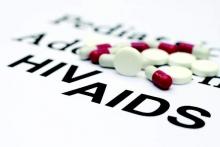A great volume of HIV and AIDS research enters the medical literature every month. It’s difficult to monitor everything, so here’s a quick look at some notable news items and journal articles published over the past few weeks.
Johns Hopkins recently received approval from the United Network for Organ Sharing to be the first hospital in the United States to accomplish HIV-positive to HIV-positive organ transplants. The institution will be the first in the nation to conduct an HIV-positive to HIV-positive kidney transplant and the first in the world to perform an HIV-positive to HIV-positive liver transplant.
A new study in Clinical Infectious Diseases suggests that the currently recommended dose of atovaquone 750 mg twice daily for treatment of mild-moderate Pneumocystis jirovecii pneumonia may not be adequate in HIV-infected patients receiving concurrent efavirenz.
Researchers have identified the mechanism of a potential HIV drug target, which could be a more cost-effective option than currently used HIV drugs. They found that the nucleoside 5-azacytidine (5-aza-C) blocks HIV’s ability to spread by first converting to a DNA form (5-aza-deoxyC). The DNA conversion allows 5-aza-C to infiltrate HIV when the virus turns RNA into DNA, and therefore stops the virus from replicating.
According to new research, extracts of the medicinal plant Cistus incanus attack HIV and Ebola virus particles and prevent them from multiplying in cultured cells. Because the antiviral activity of Cistus extracts differs from all clinically approved drugs, the researchers say Cistus-derived products could be an important complement to currently established drug regimens.
A study in the Journal of Leukocyte Biology suggests that a new therapeutic strategy for HIV may already be available by repurposing an existing prescription drug. An enzyme called adenosine deaminase, or ADA, ultimately may be able to activate the immune system against HIV and to help the immune system remember the virus to prevent or quickly eliminate future infection.
Researchers affiliated with the North American AIDS Cohort Collaboration on Research and Design reported in a new study a significantly higher median body mass index (BMI) after 3 years of antiretroviral therapy for HIV-infected white women, compared with age-matched, non-infected white women. The high prevalence of obesity observed among ART-exposed HIV-infected adults in North America may contribute to health complications in the future, they said.
A research project at the University of Copenhagen shows that the so-called ILCs (innate lymphoid cells) are severely depleted in patients infected with HIV-1. The study found that ILC numbers were preserved by antiretroviral therapy (ART), but only if initiated during acute infection. If treatment is initiated during the later chronic infection stage – as in current standard procedure – the ILCs are eradicated.
A recent study in the Journal of Clinical Investigation evaluated the effect of antiretroviral therapy (ART) on HIV levels in the female reproductive tract and cervicovaginal secretions (CVS), and demonstrated that ART can efficiently suppress cell-free HIV-RNA in CVS, despite residual levels of HIV-RNA-positive cells in both the female reproductive tract and CVS.
Patients with HIV and tuberculosis in eastern Europe have a risk of death nearly four times higher than that in patients from western Europe and Latin America, according to a study in the Lancet HIV. This increased mortality rate is associated with modifiable risk factors such as lack of drug susceptibility testing and suboptimal initial anti-tuberculosis treatment in settings with a high prevalence of drug resistance.
Reducing the number of men who go to prison could help curb the spread of HIV and other sexually transmitted infections in a community, according to research published in Social Science & Medicine. A computer model developed by researchers at the University of Michigan suggests that reducing incarceration in a community also may reduce the number of sexual partners men and women have, therefore reducing the spread of sexually transmitted infections.
European researchers undertook the first study to investigate immunogenetic variations that might account for human papillomavirus (HPV) susceptibility and the largest to date to categorize the HPV types in HIV warts. They analyzed the human leukocyte antigen (HLA) Class I and II allele distribution in antiretroviral (ART)-treated HIV-infected patients with persistent warts, noninfected controls, and HIV-infected controls, finding that HLA immunogenotype determines persistent HPV infection in ART-treated HIV.
According to a report in the Journal of Infectious Diseases, elevated soluble CD14 (sCD14) concentrations serve as an independent biomarker for the risk of mother-to-child transmission of HIV in a setting of pre-exposure and postexposure antiretroviral prophylaxis.
On Twitter @richpizzi


